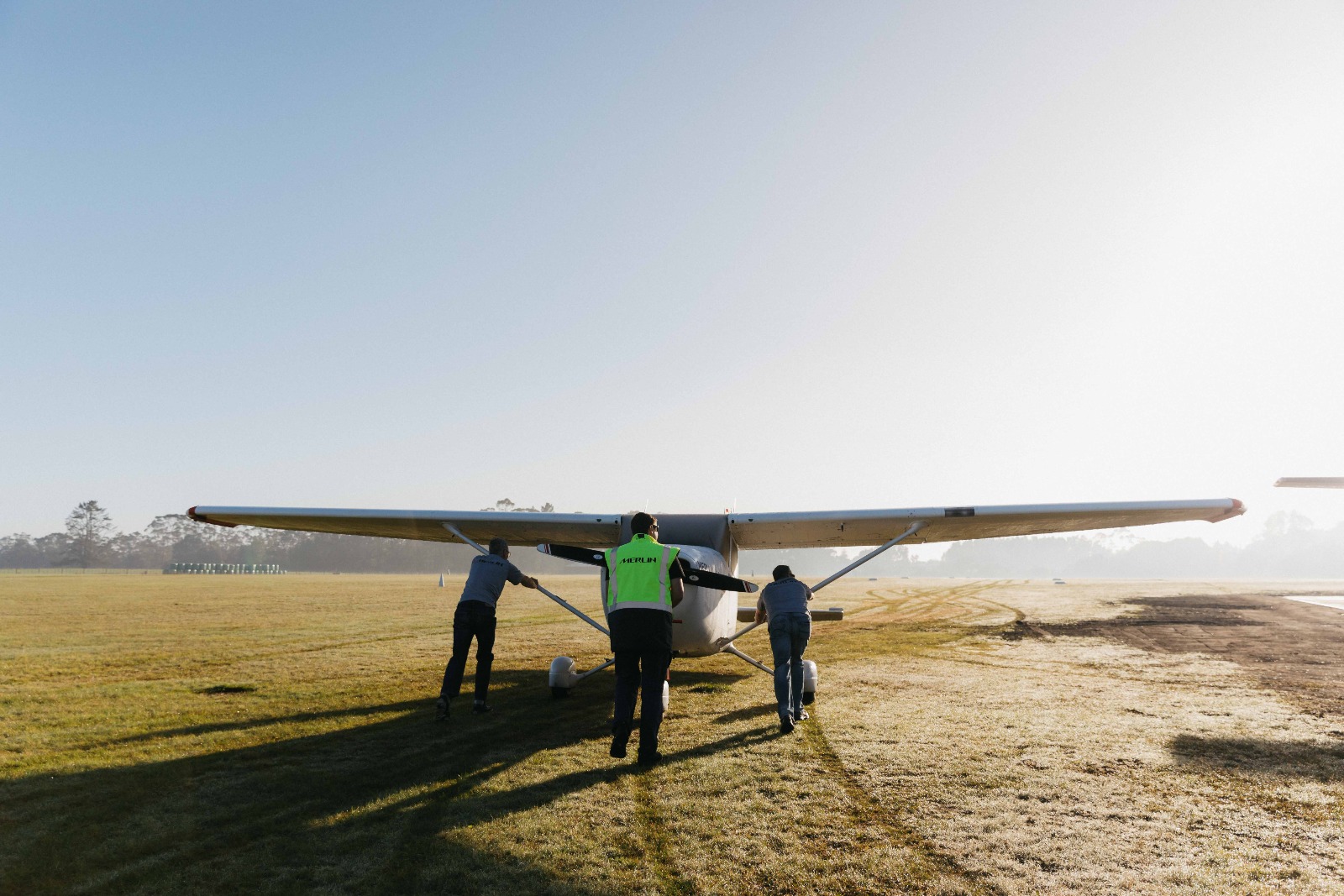ALEX NAIMAN, CTO
01
As we work to transform the future of aviation, four principles guide our engineering decisions to design and build the Merlin Pilot. These principles ensure safety, take into consideration real-world use cases, and yet provide the creative space to invent new solutions, which is necessary to unlock some of the constraints and inefficiencies that remain in aviation. Ultimately, this will enable us to succeed in our mission to create the world’s most capable pilot. Below are the four principles illustrated using the automated communication system that will be part of the first certified Merlin Pilot.
Design Principle 1: Adapt to the existing ecosystem
Air transport is the fastest and safest way to move goods and passengers around the world. This success is enabled by an aviation industry where “move fast and break things” is unacceptable at any level. When we think about building autonomy for air transport, we design solutions that fit into the existing aviation ecosystem. We avoid solutions that would require wholesale changes to ground infrastructure, airspace management systems, or anything else outside the direct control of our customers, airplane operators. The people piloting aircraft today don’t require those changes to fly, so we shouldn’t either.
Example: Merlin’s automated communication system receives and transmits audio over VHF radio, comprehends human speech from controllers, and synthesizes appropriate spoken responses. No changes to procedures, no new ground equipment or infrastructure, and no new training for controllers is required.
Design Principle 2: Focus on skills that machines can perform better
Today, highly trained professional pilots are required to fly aircraft. Even as we bring autonomy to these aircraft, some tasks are still best performed by people, such as those involving high-level reasoning. However, machines are never tired or distracted and excel at functions requiring precision, accuracy, and parallelism. We can build machines to perform arithmetic without error, interpret chart data correctly, and avoid task saturation.
Example: Software can provide superhuman communication capabilities because it is never tired, distracted, or task-saturated. It is capable of listening to many radio frequencies at once, providing additional situational awareness of other activity in the local airspace. With direct access to navigational and aircraft performance data, it can also comprehend, implement, and respond to air traffic control (ATC) instructions or queries.
Design Principle 3: Keep capability onboard the aircraft
Most aircraft are designed to be flown by pilots in a flight deck who are responsible for safe and effective flights. We are developing our systems to provide the same capabilities in the same location: onboard. Instead of remote control solutions that focus on removing crew from the aircraft, Merlin’s three-phased approach towards autonomy begins with systems developed to support and enhance the abilities of pilots, and will ultimately reduce the crew needed for large aircraft and enable small craft to fly without a crew. This phased human-machine teaming approach will result in an overall safer, more effective, and more scalable air transport system.
Example: Automated communications are implemented fully onboard the aircraft, using standard radios and performing audio processing on dedicated computers. Applying this principle doesn’t come free: we have accepted the complexity in our onboard system, which must include qualified hardware and software to perform this function. We view this as preferable to other approaches to communications, which might require wholesale changes to the air traffic control system (see principle 1).
Design Principle 4: Embrace portability
Our customers operate a wide variety of aircraft, each suited to their unique operations, ranging from the Cessna Caravan for regional cargo transport to the KC-135 for aerial refueling operations. To support this diversity of applications we are designing Merlin systems to be portable across a range of existing fleets. This approach drives the creation of modular system architectures with adaptable hardware and software components that have already enabled us to provide quick solutions for emerging customer needs without restarting engineering efforts from scratch.
Example: Communication over the radio is a core piloting skill that translates broadly across all domains of flight. The principle of portability led us to select automated communications as an early area to incorporate bleeding-edge technology solutions with autonomous functions. While some adaptation is needed to automate communications for unique operational use cases (e.g. regional cargo operations versus aerial refueling operations), the core technology and its implementation are adaptable across all of our customer applications.

These design principles allow us to deliver Merlin’s capabilities to customers quickly, making a significant impact at a large scale. If you’re intrigued by this glimpse into our design philosophy and want to help make our shared skies more accessible, we are always looking for candidates. Please take a look at our open roles and apply!
